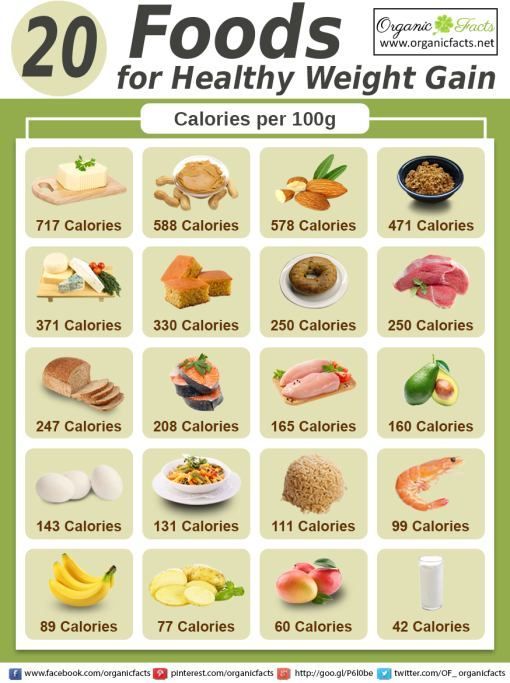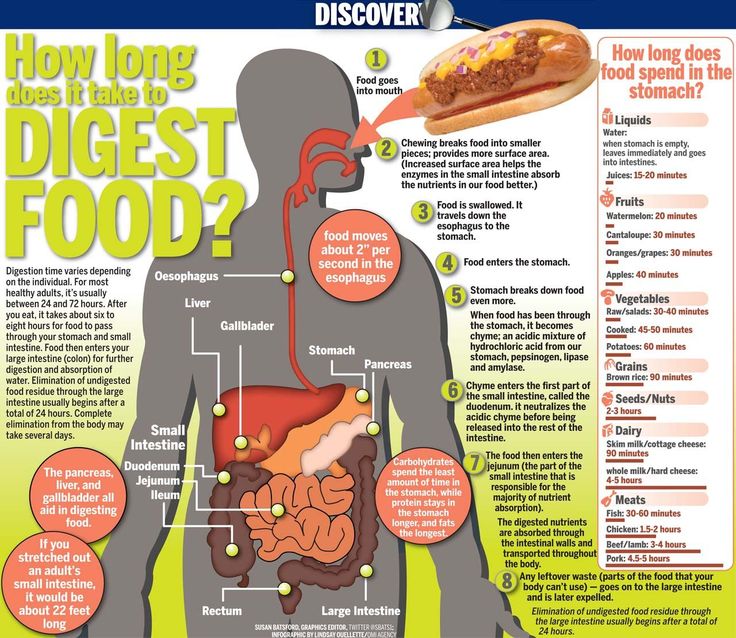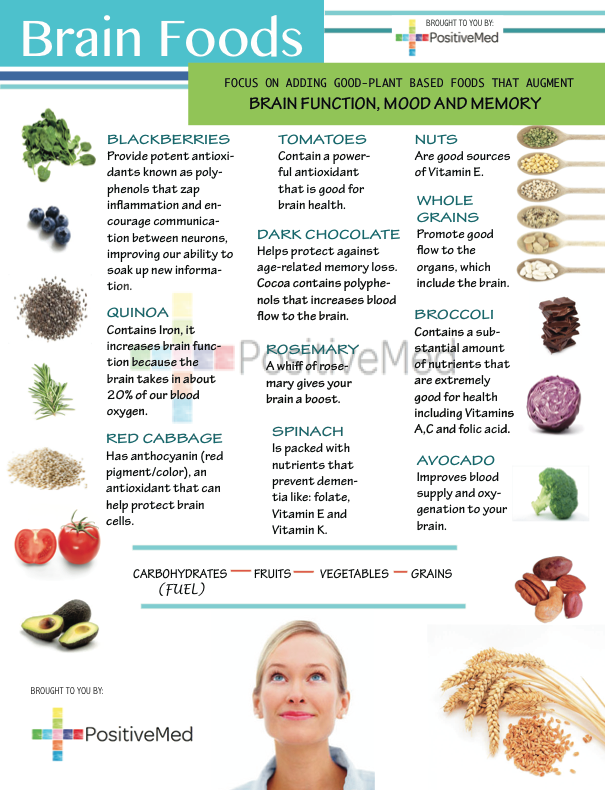Nourished beginnings baby food
Nourished Beginnings Baby Food :: Nutrient-Dense Recipes for Infants, Toddlers and Beyond Inspired by Ancient Wisdom and Traditional Foods
Years and years on my heart to write, and over a year in the making, Nourished Beginnings is now available or purchase!Growing broad taste palates for nutrient dense real food really is possible!
My three girls are living proof that serving simple, real food during those mold-able months and early years will reward you with toddlers and big kids that don’t bat an eye to a plate full of mineral rich vegetables, and brain boosting, nutrient dense food.
Nourished Beginnings is my simple, no fuss approach to feeding babies a wide variety of vegetables, fruits, meats, fish, and fats – without spending all day in the kitchen. I will walk you through safe foods to start for baby’s developing digestive system, while nourishing their growing brains and bodies. Simple tastes of nutrient dense food as they explore the family flavors in the beginning will develop into full toddler meals that nourish rapidly growing bodies.
More than just a baby food book, this traditional foods focused cookbook will grow with your baby.
These recipes are truly the heart of my home. They have been the center of my kitchen for the last 8 years…when I had my first baby. The Nourishing Pea Soup grows from babyhood to the school lunch thermoses. Baby’s First Smoothie grows into Tropical Green Smoothies they will thrive on as a teen. Nourishing baby with beef, chicken, and fish purees with nutrient dense add-ins will train their palates to enjoy a grassfed roast for Sunday dinner and fresh salmon fillets on a weeknight. Let me show you how to introduce brain boosting egg yolks, cod liver oil, and fish without fuss so that they will love and even crave them as big kids.
My biggest goal is to show you how to make a nourishing meal for the whole family to enjoy – from the babies to the teens.
What others are saying!
“Nourished Beginnings Baby Food should be in every new parent’s kitchen! Renee brings food back to the basics in a way that will not only provide your child with the nutrients they need to thrive, but also help train them to love whole foods in a way nature intended.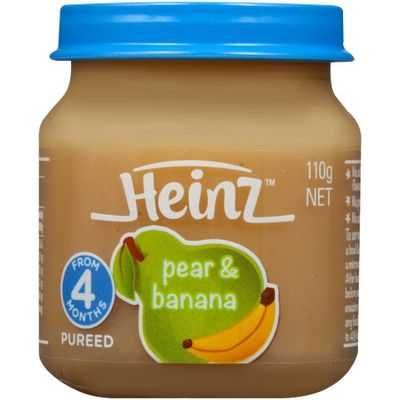 ”
”
―Amy Roskelley, co-owner of Super Healthy Kids
“Nourished Beginnings Baby Food delivers approachable, inspired recipes enveloped in practical, grounded guidance that’s otherwise missing in the dialogue on first foods. Renee Kohley shows you not only how to optimally nourish your children as they begin solid foods, but many of her recipes will likely become favorites for the whole family.”
―Jennifer McGruther, author of The Nourished Kitchen
“When it comes to elegantly simple recipes proven to be both nourishing and delicious, Renee positively shines. The simple ingredients and flavors are sure to be a hit in my home as well as others. Five stars!”
―Jill Winger, creator of The Prairie Homestead
“Renee’s book is just what our world needs. Almost all of the common diseases afflicting our children (and adults) today have a root in poor nutrition. Starting our children off right, from the very start, is going to be key to their long-term health, and Renee shows us how to prepare nutrient-dense foods that even the pickiest eaters will like.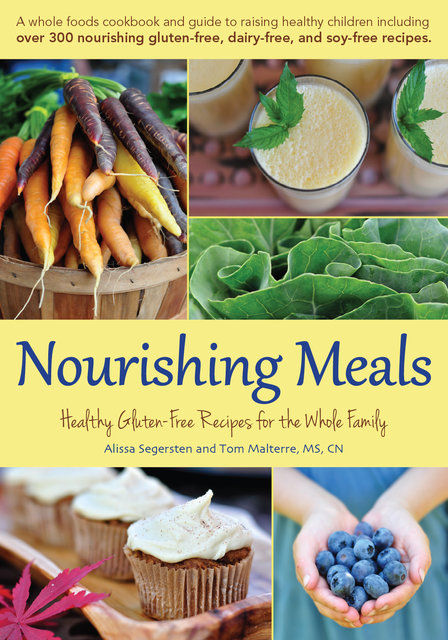 This book is not just for new parents. It’s for ALL parents.”
This book is not just for new parents. It’s for ALL parents.”
―Jessica Espinoza, creator of DeliciousObsessions.com and 20Dishes.com
“In Nourished Beginnings Baby Food, Renee offers an invaluable resource of approachable family recipes to help your family confidently lay a nourishing foundation for a balanced and practical real-food lifestyle.”
―Kristin Marr, creator of Live Simply
“Renee’s Nourished Beginnings is an absolute must-have in any parent’s library. She teaches you how to get your children hooked on real, nutrient-dense, traditional foods no matter their age, with a special focus on making every bite count for babies and toddlers. This is especially helpful for new moms or otherwise busy parents who want to feed their children the best food possible made from whole ingredients.”
―Amanda Torres, MS, creator of The Curious Coconut
Nourished Beginnings is available at ::
Nourished Beginnings Baby Food: Nutrient-Dense Recipes for Infants, Toddlers and Beyond Inspired by Ancient Wisdom and Traditional Foods by Renee Kohley
Lara
4,136 reviews339 followers
June 16, 2020Our doctor said to start feeding our 4-month old food, so naturally I freaked out and put every baby food book in the library on hold. This is the first one I looked at, and...what the hell? The first recipe is for peas with bone broth, butter and sea salt. Uh...okay? The next one is for carrots with tallow or lard and sea salt. The third one is for zucchini and marrow with bone broth and sea salt. This is cleeeeeearly not the book for me. First of all, vegetarian. Second of all, even before that, tallow and lard and bone broth and marrow are not things that have ever been in my house. Thirdly, I mean...I thought I was just supposed to squish up bananas or something? This stuff all just seems fancy and complicated, which I DEFINITELY do not have the time or energy for right now.
This is the first one I looked at, and...what the hell? The first recipe is for peas with bone broth, butter and sea salt. Uh...okay? The next one is for carrots with tallow or lard and sea salt. The third one is for zucchini and marrow with bone broth and sea salt. This is cleeeeeearly not the book for me. First of all, vegetarian. Second of all, even before that, tallow and lard and bone broth and marrow are not things that have ever been in my house. Thirdly, I mean...I thought I was just supposed to squish up bananas or something? This stuff all just seems fancy and complicated, which I DEFINITELY do not have the time or energy for right now.
There are some family recipes that look pretty good, but they look like regular cookbook type recipes, so I'm not sure what they're doing in a baby food book. Really the baby section is only about a third of the book.
If this book works for you, like it obviously does some, awesome! I do not get it though. I'm sending it back to the library and will keep looking for something less meat fatty and more simple.
- food libraried parenting
Leah
12 reviews9 followers
March 13, 2017Wow, this book is fantastic. I've been interested in traditional foods or Weston A. Price diet for a while and I've started including several aspects into my life but have been too overwhelmed to go all the way. Nourishing Traditions by Sally Fallon is a hefty book after all. Kohley makes it seem so simple! I absolutely love the baby food ideas. They made my mouth water! This is a wonderful book for parents of babies and adults interested in traditional foods. I also really appreciated that all the soaked grain recipes include soaking instructions in the recipe instead of elsewhere in the book. Very user friendly. This book is beautiful, straightforward and full of good stuff.
April 3, 2019
Ah, the good old Weston A Price, again. I actually thought this book had lots of really good recipes, but I always have to read anything from these folks with a grain of salt.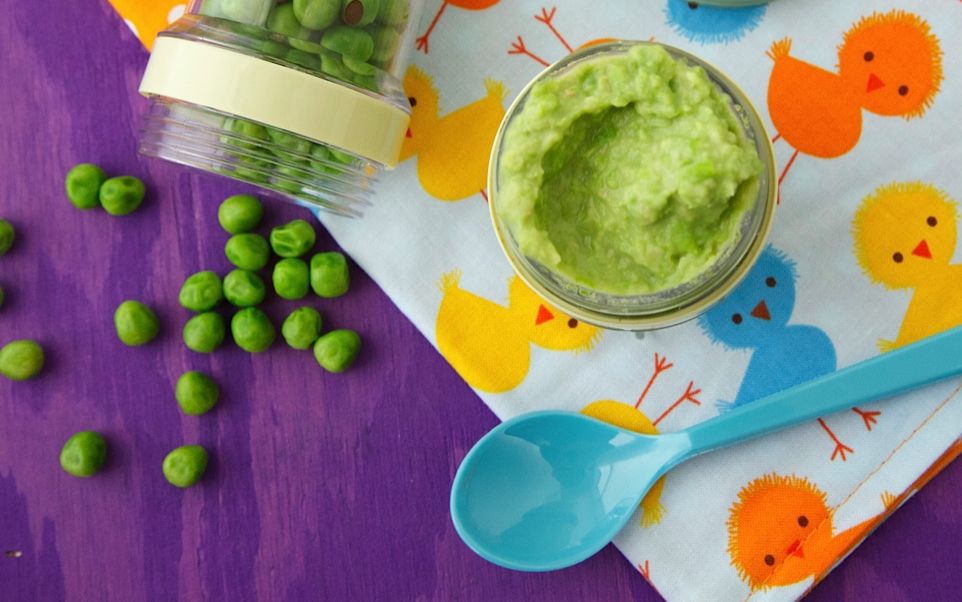 In this case, everything I've read about feeding babies has said to avoid honey, added salt, and added sweeteners. Pretty much every recipe in this book contained added salt. There were quite a few finger food recipes that I'm excited to try with our baby, and I like how the author explained easy ways to incorporate things like bone broth and healthy fats into your baby's diet.
In this case, everything I've read about feeding babies has said to avoid honey, added salt, and added sweeteners. Pretty much every recipe in this book contained added salt. There were quite a few finger food recipes that I'm excited to try with our baby, and I like how the author explained easy ways to incorporate things like bone broth and healthy fats into your baby's diet.
- food nonfiction parenting
December 28, 2021
The only baby feeding book you'll ever need honestly. I'm sending all my others off to the thrift store. I will still purchase the Nourishing traditions book of baby and child care as it is more comprehensive, I think them together will be perfect. That's the only fault with this book, I wish it were longer/had more recipes. But what IS in it is excellent info. No need to tweak any of the recipes to suit a proper diet, the author lines up with the Weston a price foundation guidelines perfectly. The drink section was cool too, had never thought of broth being an actual drink, and the "teas" are such a good idea.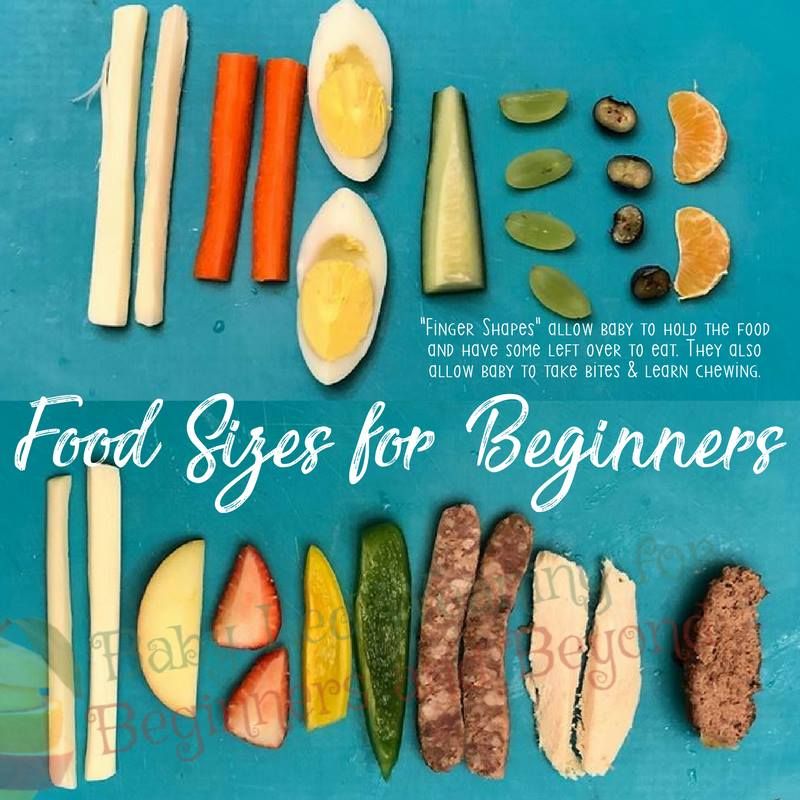 Also loved the basics section that teaches some simple kitchen skills needed to create nutrient dense meals for babies and toddlers. If I were to buy a baby food book for a new mum friend, this would be it.
Also loved the basics section that teaches some simple kitchen skills needed to create nutrient dense meals for babies and toddlers. If I were to buy a baby food book for a new mum friend, this would be it.
Leticia
264 reviews1 follower
November 4, 20194/5 only because I wish it would have mentioned purees and cereals that could be blended with bm/formula for young infants. Some of these seem like they would be harsh on a young baby's belly and would be better for babies closer to 1yr old.
January 25, 2023
I was nervous to ask for this book, thinking it might be all pureed foods (especially after reading some reviews), but I am SO glad I did! Not only to these recipes sound delicious, but they are made with things I already typically have on hand. Bravo!
October 4, 2016
Wish I'd had this book when my kids were born!
Renee's commitment to and love for nourishing whole foods comes across in her new book as it does in her wonderful blog. Each page reminds us about the benefits of traditional foods like bone broth, healthy fats, and probiotic-rich eats like sauerkraut and kefir that most of us came to much later in life. Lucky are the little ones who are fed using some of these recipes! I also loved her section on beverages and supporting kids' health with gentle herbs like nettle and chamomile. She makes all these health-promoting ideas seem doable, even to a busy parent.
Each page reminds us about the benefits of traditional foods like bone broth, healthy fats, and probiotic-rich eats like sauerkraut and kefir that most of us came to much later in life. Lucky are the little ones who are fed using some of these recipes! I also loved her section on beverages and supporting kids' health with gentle herbs like nettle and chamomile. She makes all these health-promoting ideas seem doable, even to a busy parent.
She reminds us that there's no reason everyone can't eat the same food at the dinner table and gives us a roadmap for making healthy and delicious foods to please everyone. While this book has tools for those with very young babies, it also has great recipes and tips for feeding the whole family nourishing, healthy foods. Renee's book will certainly forward her mission of helping us raise Generation Nourished!
how to choose and what kind of baby food is better?
The ideal "baby food" for an infant is breast milk. However, not all mothers can breastfeed their baby, usually this is due to the health of the mother or child. It happens that the woman herself has a serious condition after childbirth and in the early postoperative period, reduced lactation or diseases in which breastfeeding is contraindicated. In such cases, the baby is given formula milk - this is the only alternative to mother's milk. Subsequently, at four to seven months, complementary foods should be introduced into the child's diet, regardless of whether he is breastfed or artificial. The mother is faced with the task of choosing the right baby food for complementary foods.
However, not all mothers can breastfeed their baby, usually this is due to the health of the mother or child. It happens that the woman herself has a serious condition after childbirth and in the early postoperative period, reduced lactation or diseases in which breastfeeding is contraindicated. In such cases, the baby is given formula milk - this is the only alternative to mother's milk. Subsequently, at four to seven months, complementary foods should be introduced into the child's diet, regardless of whether he is breastfed or artificial. The mother is faced with the task of choosing the right baby food for complementary foods.
In this article, we will talk about what foods for babies are and how to choose the best baby food.
Legislation under "baby food" means food products that meet the physiological needs of the body of a child under 14 years of age. And nutrition for young children is food intended for children from birth to three years[1]. It is necessary to make a diet taking into account the age of the baby and the characteristics of his physical condition.
The Union of Pediatricians of Russia created the National Program for feeding children in the first year of life and the National Program for optimizing the nutrition of children from one to three years old [2]. They describe recommendations regarding what formula to feed the baby from birth, how to introduce complementary foods and expand the baby's diet. These programs provide detailed information on what nutrients and nutrients should be included in the diet of children of different ages.
First you need to figure out what kind of baby food is [3]. Products for toddlers can be divided into two categories:
Infant formula. There are for children from birth to six months (formula 1 mixtures, or initial), from six months to a year (formula 2) and from a year (formula 3). The composition of such baby food is adapted, that is, as close as possible to the composition of breast milk.
- In the initial mixtures, the amount of protein is reduced to 1.
 2-1.5 g / 100 ml - in accordance with the composition of breast milk. They also changed the fat and mineral profile. The initial mixtures are enriched with such an essential amino acid as taurine, and micronutrients, probiotics, vitamins.
2-1.5 g / 100 ml - in accordance with the composition of breast milk. They also changed the fat and mineral profile. The initial mixtures are enriched with such an essential amino acid as taurine, and micronutrients, probiotics, vitamins. - After six months, the baby's need for protein increases, mother's milk changes its composition. And babies on artificial feeding begin to be fed with a more nutritious mixture of formula 2. Taurine is no longer always needed: the body of a baby aged from six months to a year is able to synthesize this amino acid itself. Meanwhile, the content of iron, calcium, zinc increases compared to the initial mixtures, because by this age the child's reserves of minerals received from the mother during pregnancy are depleted, and they need to be replenished.
- A child's diet changes after one year - he is already able to eat a variety of solid foods. However, it is advisable to continue to feed him with a mixture, though already formula 3. Pediatricians recommend it as a source of vitamins and minerals that the baby can easily absorb.

Complementary foods As we have already noted, it is introduced when the baby is four to seven months old. This interval is called the "critical window" and is considered optimal for the initiation of complementary foods for several reasons:
- The baby needs a wider range of minerals, vitamins and other nutrients. In addition, his baby's digestive system is already ready to accept more solid and complex foods than mother's milk or infant formula.
- At this age, the child develops an interest in food, and it is necessary to offer him the right foods to develop his taste.
- During this period, the risk of developing a food allergy to a new product is lower.
- Timely introduction of complementary foods prevents the risk of micronutrient deficiencies and iron deficiency anemia.
Usually the first food is vegetable puree or monocomponent gluten-free cereals, dairy or dairy-free. Over time, cereals containing gluten, supplements from fruits and berries, and also consisting of several cereals are added.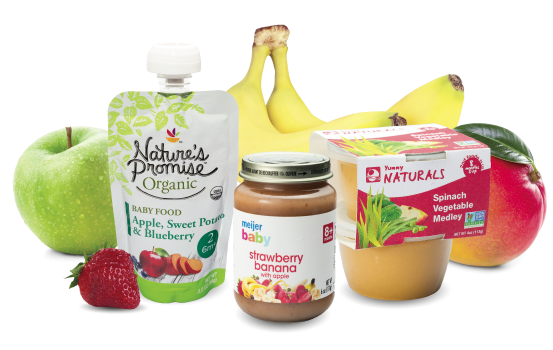 A six-month-old child can already be given several types of vegetables and cereals. Also, at about six months, they begin to give meat puree, then fruit, and from eight months - fish. A child from seven months is allowed the yolk.
A six-month-old child can already be given several types of vegetables and cereals. Also, at about six months, they begin to give meat puree, then fruit, and from eight months - fish. A child from seven months is allowed the yolk.
From the age of 12 months, complementary foods already make up the majority of your baby's diet. At this age, it is especially important to diversify the child's diet: he can be given soups with small pieces of vegetables, meat, fish and cereals.
Information
During the first feeding, the baby's eating habits are laid, and it depends on the parents how correct they will be. Often, mothers introduce fruit juices into complementary foods too early. And because babies have an innate preference for sweet tastes, they can become naughty and stop eating the unsweetened foods they need, especially vegetables. Unhealthy taste habits are formed, which can later provoke obesity.
Domestic doctors are concerned about such irrational nutrition of young children - due to the wrong approach to nutrition, many babies experience a deficiency of vitamins and an excess of fast carbohydrates.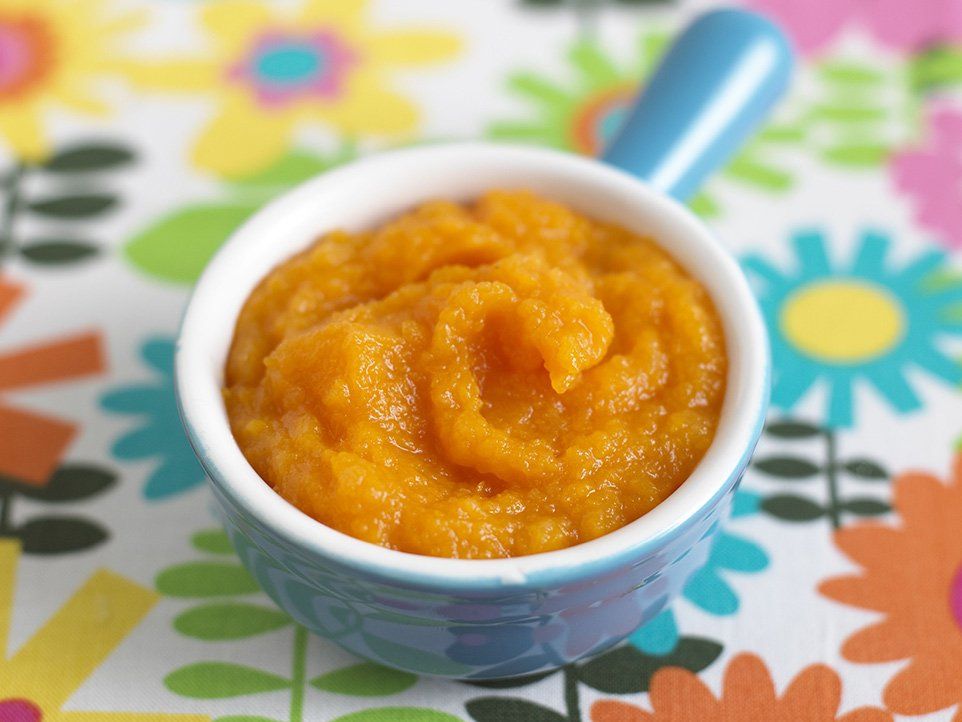
How to choose baby foods
Finding the right foods for your baby is not an easy task. Store shelves are bursting with boxes, jars and bottles, and manufacturers write on every second package that the baby will be healthy, strong and cheerful after feeding. Of course, the baby will receive the necessary substances, no matter what product his parents choose, because all the production of baby food is strictly controlled by the state. By the way, Russia has some of the most stringent requirements for the quality of baby food in the world.
However, products for children differ in their properties. It is necessary to select food so that by the end of the first year of life the baby has actively developed chewing skills and an interest in independence, and the diet of complementary foods is reasonably varied.
For children from one to three years of age, the diet should be even more varied. It is important that the child receives daily something new from the main food groups: dairy, vegetables and fruits, meat and fish, cereals, butter and vegetable oil. Of course, the baby's diet should be expanded taking into account his state of health.
Of course, the baby's diet should be expanded taking into account his state of health.
When organizing the nutrition of a child from the moment of introduction of complementary foods and up to three years, a mother needs not only to know what can be fed, but also to consider what foods should not be included in the diet. Among the prohibited products for children under three years of age:
- any mushrooms, vegetables and fruits in a marinade;
- pickles, preserves in tomato sauce;
- commercial juice concentrates, carbonated drinks, coffee and strong tea;
- various condiments - mustard, ketchup, hot sauces, horseradish, pepper, vinegar, mayonnaise;
- products containing flavors, industrial colors, including chewing gum;
- margarine and refractory fats - lamb, pork;
- chocolates, sweets and other sweets.
To choose the right baby food, you need to know exactly what you should pay attention to and what you don't need to worry about.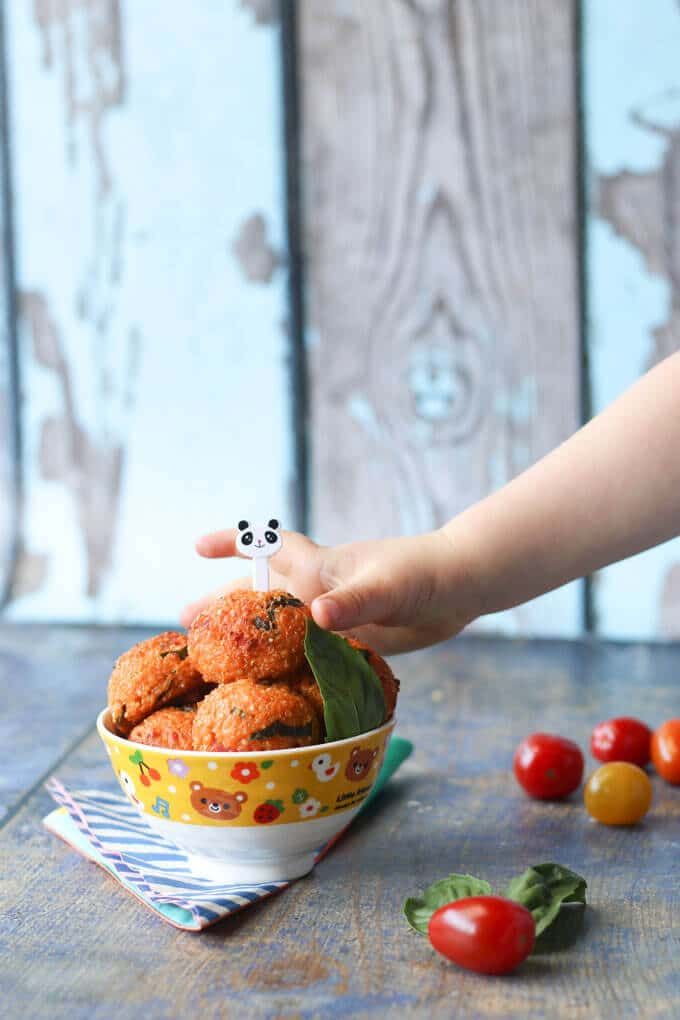
When choosing mixtures, it is important to check:
- Absence of palm oil. Formula manufacturers may use palm oil (more specifically palm extract) because, like breast milk, it is rich in palmitic acid. However, in human milk, palmitic acid is in the beta position, while in palm oil it is in the alpha position. Such alpha-palmitic acid can interfere with the absorption of calcium and fats and is generally less well absorbed by the child's body. This can negatively affect the work of the intestines, lead to constipation, regurgitation. Milk fat is better suited for baby food as a source of palmitic acid[4][5].
- Protein ratio. Breast milk protein is primarily whey proteins and casein. A child needs both types of protein, while proteins are easily digested, which cannot be said about casein. If baby food contains a lot of casein, it stays longer in the digestive tract, which can cause problems with the baby's stool.

- The presence of additional functional elements in the composition - lutein, nucleotides, pre- and probiotics. The task of lutein is to protect vision from ultraviolet rays. Nucleotides are low molecular weight compounds that promote the growth of beneficial bifidobacteria in the intestines. And pre- and probiotics in the composition of infant formulas help to establish comfortable digestion.
When choosing complementary foods, pay attention to:
- Age appropriate. It is important that in the diet of a child under three years of age who receives complementary foods, special children's products predominate - in their composition the components are selected taking into account the age-related needs of the baby's body. It is impossible at an early age to transfer children to "adult" foods like pickles, smoked foods, fast food, and so on.
- Fortified products. It is important that the composition contains vitamins and minerals.
 The National Child Nutrition Optimization Program recommends choosing complementary foods that contain elements designed to prevent anemia, rickets, and vitamin deficiencies.
The National Child Nutrition Optimization Program recommends choosing complementary foods that contain elements designed to prevent anemia, rickets, and vitamin deficiencies. - For a varied diet. The menu for a baby up to six months is quite monotonous. But as they grow older, the baby needs more various nutrients - proteins, carbohydrates, fats, vitamins, minerals.
- For the individual reaction of the baby. If the child is already receiving complementary foods, then it is worth introducing a new product only after the previous one has been fully introduced. If the baby is allergic to the product, then it should be administered carefully, carefully checking the reaction of the body.
Ingredient safety testing is optional. Of course, the content of any "chemistry" in the product for feeding a child, whether it be a mixture or complementary foods, is unacceptable. There is no need to worry about this: baby food is carefully checked. If it is registered on the territory of the Customs Union and hit the shelves, then it complies with SanPiN 2.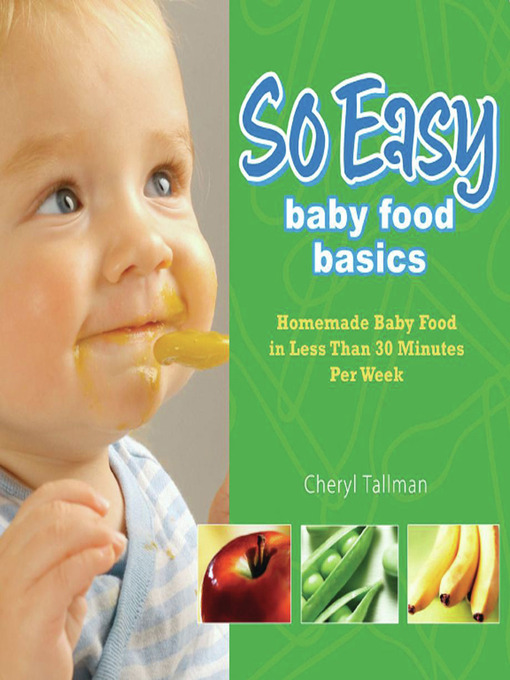 3.2.1940-05 and there will be no "prohibited" components in its composition. Also, contrary to popular misconception, in Russia it is forbidden to use GMOs in children's products.
3.2.1940-05 and there will be no "prohibited" components in its composition. Also, contrary to popular misconception, in Russia it is forbidden to use GMOs in children's products.
Note
Baby food in jars (usually mashed potatoes) has a short shelf life after opening because it does not contain preservatives. However, before the jar is opened, the products can stand for quite a long time on the shelves of stores or in the refrigerator at home. This is possible thanks to a special production technology, sterilization and vacuum packaging. If a soft pop is heard when opening the jar, this is a good sign: the puree is not spoiled. But products in jars with swollen lids or a protruding bottom should not be used: microorganisms already multiply in such food, it is not suitable for food.
Features of the choice of dairy products
It is necessary to choose dairy products for babies, following the doctor's recommendations. The specialist will take into account the health of the baby, especially if he is allergic to cow protein. In Russia, such an allergy occurs in 30–40% of children [6]. Such a reaction may occur due to hereditary predisposition and immaturity of the organism. But most often, allergies go away when the child grows up.
The specialist will take into account the health of the baby, especially if he is allergic to cow protein. In Russia, such an allergy occurs in 30–40% of children [6]. Such a reaction may occur due to hereditary predisposition and immaturity of the organism. But most often, allergies go away when the child grows up.
Goat milk baby food may be a suitable option for young children with a predisposition to allergies. Its protein is perceived by the body better than cow's: alpha-s1-casein, contained in large quantities in cow's milk, makes a product based on it difficult to digest - food stagnates in the baby's gastrointestinal tract, motor skills are disturbed, as a result, allergies often occur. In goat milk, as in breast milk, there is practically no alpha-s1-casein [7]. Therefore, goat's milk, and hence the mixture based on it, are better absorbed.
Of course, with the introduction of complementary foods, other dairy products will appear in the baby's diet. Unadapted fermented milk drinks, such as kefir, yogurt, biolact, can be introduced into the diet from eight months and in an amount not exceeding 200 ml. Also during this period, it is recommended to give cottage cheese - no more than 50 g per day, but according to indications, it can also be prescribed from the age of six months. Whole milk cannot be used as the main food, and it is advised to introduce it into the diet of babies no earlier than a year (in the amount of 100-150 ml per day) [8]. As mentioned above, it must be adapted infant milk or formula 3 formula.
Also during this period, it is recommended to give cottage cheese - no more than 50 g per day, but according to indications, it can also be prescribed from the age of six months. Whole milk cannot be used as the main food, and it is advised to introduce it into the diet of babies no earlier than a year (in the amount of 100-150 ml per day) [8]. As mentioned above, it must be adapted infant milk or formula 3 formula.
To choose the best baby food, it is necessary to take into account the health of the baby, his tastes, as well as individual reactions of the body. Therefore, before going to the store, you should consult a doctor. The specialist will not only tell you which baby food to choose, but also give recommendations on how to make the child's diet balanced and healthy.
The best formulas for newborns, top-9 rating of milk formulas
Subscribe to our VK community!
It's no secret that the best food for a newborn baby is breast milk. Unfortunately, not every woman has the physical or moral ability to provide them with her child. This may be due to certain diseases, medications taken and a number of other important factors. In this case, you have to resort to things like infant formula.
Unfortunately, not every woman has the physical or moral ability to provide them with her child. This may be due to certain diseases, medications taken and a number of other important factors. In this case, you have to resort to things like infant formula.
Today, grocery stores and pharmacies carry a wide variety of these products. They can differ greatly in composition, nutrient content, and a number of other factors. So that you are not mistaken in such an important issue, we decided to rank the best baby formulas. However, before proceeding with the analysis of these products, we would like to give you some useful tips on making the right choice. Let's start with this, and in the future we will move on to the review itself.
Rank summary: (hide/show)
How to choose infant formula in 2022-2023?
As we said a little higher, it is very easy to get confused in the variety presented on the shelves of stores. First you need to figure out what kind of food is.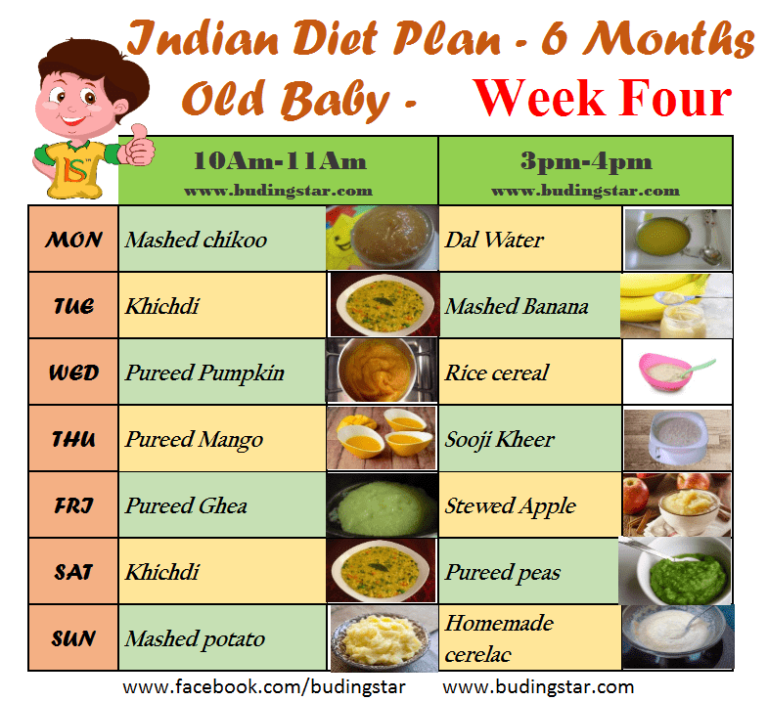 According to its consistency, it can be of two types - dry and liquid. Dry products represent about 90% of all available on the market. It is usually packaged in a cardboard box or tin, made in the form of a powder, which must be diluted with boiled water at room temperature before use. Liquid mixtures are usually ready to use - they just need to be warmed up a little. They are sold in special tetrapack packages, divided into portions of 200 ml each - for one full meal. It is not so easy to find such a mixture in ordinary stores.
According to its consistency, it can be of two types - dry and liquid. Dry products represent about 90% of all available on the market. It is usually packaged in a cardboard box or tin, made in the form of a powder, which must be diluted with boiled water at room temperature before use. Liquid mixtures are usually ready to use - they just need to be warmed up a little. They are sold in special tetrapack packages, divided into portions of 200 ml each - for one full meal. It is not so easy to find such a mixture in ordinary stores.
Almost all of these products are made on the basis of cow's milk, but the protein is present here in an altered form. Here, too, there is a classification - adapted, partially adapted and non-adapted. The former are produced on the basis of demineralized milk whey, therefore, in terms of their composition and nutritional properties, they are as close as possible to breast milk. They are well absorbed, designed specifically for newborns. Due to the complex manufacturing technology, such products are quite expensive.
Partially adapted mixtures contain lactose and sucrose, and also do not have a stabilized mineral fat composition. The latter type is made on the basis of casein, an unchanged protein found in cow's milk.
When choosing milk formula, be sure to take into account the age indicator. For newborns or premature babies, a product labeled 0 would be suitable, a product with the number 1 is designed for children under the age of six months, 2 - from six months to a year, 3 - for older children.
Finding the right mixture the first time is not always easy. It is advisable to carefully monitor the condition of the child after feeding and the reaction to the mixture. If the slightest signs of an allergy suddenly appear, then you should immediately abandon the selected product and switch to another one. The same is done if the child has loose stools, he shows anxiety after feeding, weakly gains weight. The mixture should be prepared in strict accordance with the instructions on the package.
When we selected the nutrition to include in our 2022-2023 Best Blends list, we were guided by all the considerations in the first place. However, some other factors were taken into account - this is the ratio of price and quality of products (it should be borne in mind that baby food is always quite expensive), as well as user reviews.
Top Nine Infant Formula 2022-2023
9. Similac (Abbott) Gold
This is the latest development in the company's infant formula line. It is characterized by an innovative composition, which is now even closer to natural breast milk. The original ingredient is added here - oligosaccharide, which until then was found only in human milk. You will not find similar products on the market today. With the help of this component, beneficial bacteria begin to actively develop in the intestines of a child. Due to the fact that up to 70% of the cells of the immune system are located in this organ, when using such milk, it is possible to strengthen and largely maintain the natural defenses of a developing and growing organism. The substance reduces colic in the baby's tummy, makes it more calm.
The substance reduces colic in the baby's tummy, makes it more calm.
Literally in a week the child starts crying much less, and in a month the immune system becomes twice as strong and better resists various infections. The product also contains bifidobacteria B.lactis, a very effective and thoroughly researched probiotic. It contributes to the development of the natural intestinal microflora of the baby, and also maintains the digestive system in perfect order. There are FOS prebiotics, which are food for beneficial intestinal microflora, contribute to gentle emptying. The composition does not contain palm oil, so the likelihood of constipation is minimal, and calcium will be absorbed very well.
Benefits:
- Instantly dissolves in water without forming lumps;
- Prevents colic and constipation;
- No palm oil;
- Has all the nutrients you need, many of which are not found in other formulas.
Drawbacks:
- Expensive;
- Not found in all stores.

Similac (Abbott) Gold
8. Friso VOM
A special anti-reflux mixture, the main purpose of which is to eliminate various negative effects of feeding a child, such as colic or spitting up. The composition contains a special thickener, which is absolutely harmless to the health of the child. Its function is as follows: when it enters the baby's stomach, it does not allow the mixture to come out back, as happens when spitting up. Here, locust bean gum acts as an anti-reflux substance - a special component that also positively affects the functioning of the children's intestines and prevents constipation. It contains skimmed milk powder, as well as whey. Lactose acts as a source of carbohydrates here. Galactooligosaccharides act as a prebiotic - they help to establish proper bowel function.
Another useful substance is the polyunsaturated fatty acid Omega-3, -6. Such compounds are useful for the child's vision to develop well and in accordance with age. Nucleotides are indispensable for the development of brain connections and the digestive tract. For additional thickening of the mixture, maltodextrin is used. It does not harm the baby's esophagus and stomach, and decomposes into glucose in the intestines. It contains a whole complex of vegetable oils - sunflower, palm, rapeseed and special unicellular oil. All of them are aimed at creating the elasticity of the skin.
Nucleotides are indispensable for the development of brain connections and the digestive tract. For additional thickening of the mixture, maltodextrin is used. It does not harm the baby's esophagus and stomach, and decomposes into glucose in the intestines. It contains a whole complex of vegetable oils - sunflower, palm, rapeseed and special unicellular oil. All of them are aimed at creating the elasticity of the skin.
Benefits:
- Provides a restful sleep for the baby after the evening feeding;
- Stabilizes the chair;
- Improves the functioning of all systems of the baby's body;
- Prevents regurgitation;
- The complex of nutrients is perfectly balanced.
Drawbacks:
- Quite expensive;
- Very thick - difficult to pass through the nipple;
- It is necessary to dilute with rather hot water - its temperature should not be lower than 50 degrees, it is also hard to stir.
Friso VOM
7.
 Valio Baby
Valio Baby Another dry adapted product, and it has the appropriate label, depending on which mixture is intended for children of a certain age. It is optimal for babies largely due to the perfectly balanced composition, and it is close to natural breast milk. It does not contain palm oil, but there is a complex of GOS prebiotics (galactooligosaccharides). These substances are found in large quantities in women's milk, they contribute well to the growth of intestinal microflora, restore digestion. In addition, such substances gently affect the stool and contribute to the active development of the baby's immune system. The complex of vitamins and minerals is ideally balanced so that the development of the body occurs harmoniously in strict accordance with the age of the child. These include iron, zinc, vitamin C, calcium, and phosphorus, with the latter two also for proper skeletal development.
There is no palm oil here, so the child will have little colic, regurgitation and constipation. There is natural milk fat, which is completely identical to the complex of maternal milk fats. Dietary cholesterol is also at the required level. There are no artificial flavors or colors, as well as preservatives or genetically modified products.
There is natural milk fat, which is completely identical to the complex of maternal milk fats. Dietary cholesterol is also at the required level. There are no artificial flavors or colors, as well as preservatives or genetically modified products.
Benefits:
- Perfectly balanced composition;
- Presence of a complex of vitamins and minerals;
- Pleasant smell and taste - most babies eat this mixture with undisguised pleasure;
- Dissolves perfectly in water without forming lumps or other inclusions.
Disadvantages:
- Some babies may have an allergic reaction to this mixture.
Valio Baby
6. Semper Baby Nutradefense
The mixture contains an original combination of MFGM & Milk fat components, which includes membranes of milk fat globules and a certain percentage of natural milk fat. All these compounds are found in breast milk and are very important for the proper formation and development of the child. Clinical studies have shown that the use of milk formula with a similar complex reduces the likelihood of infectious diseases and increases the cognitive development of babies compared to children who ate formulas without such components. The packaging is hermetically sealed, preventing water vapor from the air from entering the mixture. Directly on the jar there is a detailed instruction on the preparation and use of the mixture, as well as on the amount of volume, depending on the age of the baby.
Clinical studies have shown that the use of milk formula with a similar complex reduces the likelihood of infectious diseases and increases the cognitive development of babies compared to children who ate formulas without such components. The packaging is hermetically sealed, preventing water vapor from the air from entering the mixture. Directly on the jar there is a detailed instruction on the preparation and use of the mixture, as well as on the amount of volume, depending on the age of the baby.
The mixture dissolves perfectly even in cold water, and it diverges very well: no lumps are formed either at the bottom or on the surface, although the manufacturer recommends diluting the product at a temperature of 40 degrees. Suitable for most babies, copes well with colic and constipation. Due to the presence of all the necessary substances and minerals, the baby, when using such a mixture, gains weight according to the plan.
Advantages:
- The original composition of the mixture with the addition of all the necessary nutrients;
- Colic, regurgitation disappear in children, allergic reactions do not occur;
- Mixes well even in cold water;
- Babies enjoy eating these products.

Disadvantages:
- The measuring spoon that comes with the composition is often located at the very bottom of the jar;
- Relatively high cost.
Semper Baby Nutradefense
5. Nutrilon Superpremium
This company has been in the baby food business for over 40 years, and the experts have done well in this matter. Researchers studied mother's milk, tried to find out the optimal ratio of nutrients, vitamins and minerals. As a result, they have an optimal mixture that can be used as a main or additional food. In addition, the product is so similar to mother's milk that it is recommended for a smooth transition from breastfeeding to formula-feeding, if necessary. The composition lays a solid foundation for the health of the baby. The developers have added a significant amount of DHA / ARA fatty acids to it, which contribute to the rapid development of the baby's intelligence. The mixture also contains milk lipids, which provide the entire necessary spectrum of minerals, and this complex is perfectly balanced.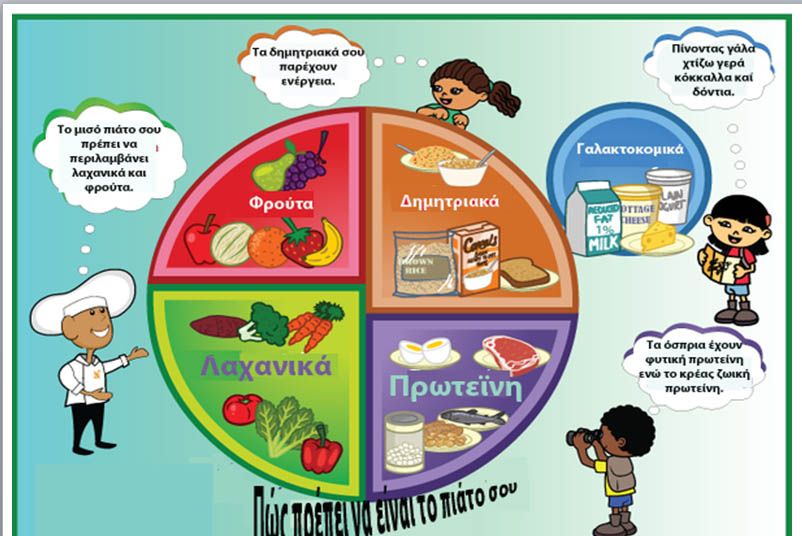
All prebiotics present in the composition are aimed at the active development of immunity. The mixture is produced in containers weighing 400 or 800 grams. The packaging is made of materials that allow you to hold it with one hand, without fear that it will slip out of your palm. Preparation of the mixture takes only a few seconds, and you can use ordinary boiled water at room temperature, you do not need to heat it. This allows you to quickly make food for the child, for example, at night, when there is not much time for cooking, and the baby screams a lot and can wake up the household.
Benefits:
- The composition contains biologically active components that ensure the growth and development of the child;
- The composition is aimed at the prevention of most pathological processes;
- The product has the same ratio of fats, proteins, carbohydrates and lactose as in human milk;
- There is an improvement in the functioning of the entire gastrointestinal tract in the baby;
- Produced on the basis of original European technology;
- Found in almost every major grocery store;
- Acceptable cost.

Flaws:
- Minor amounts of coconut and palm oil present;
- Some parents find that the product does not taste very good.
Nutrilon Superpremium
4. Nestogen
Carefully balanced nutrition ensures the normalization of the child's digestive system, and hence the proper development of the entire child's body. The mixture is absolutely safe, absorbed almost instantly. The contained prebiotics not only make the digestive process stable and relieve constipation, but also contribute to the beneficial development of the intestinal microflora and prevent regurgitation. Depending on the numerical marking, the mixture can be given to children from birth until the age of two. It is produced in cardboard packages, but the powder of the mixture itself is in sealed foil packaging.
The composition contains all the micro and macro elements that are necessary for a growing child's body. There are also fats and amino acids that can make up for the lack of nutrients.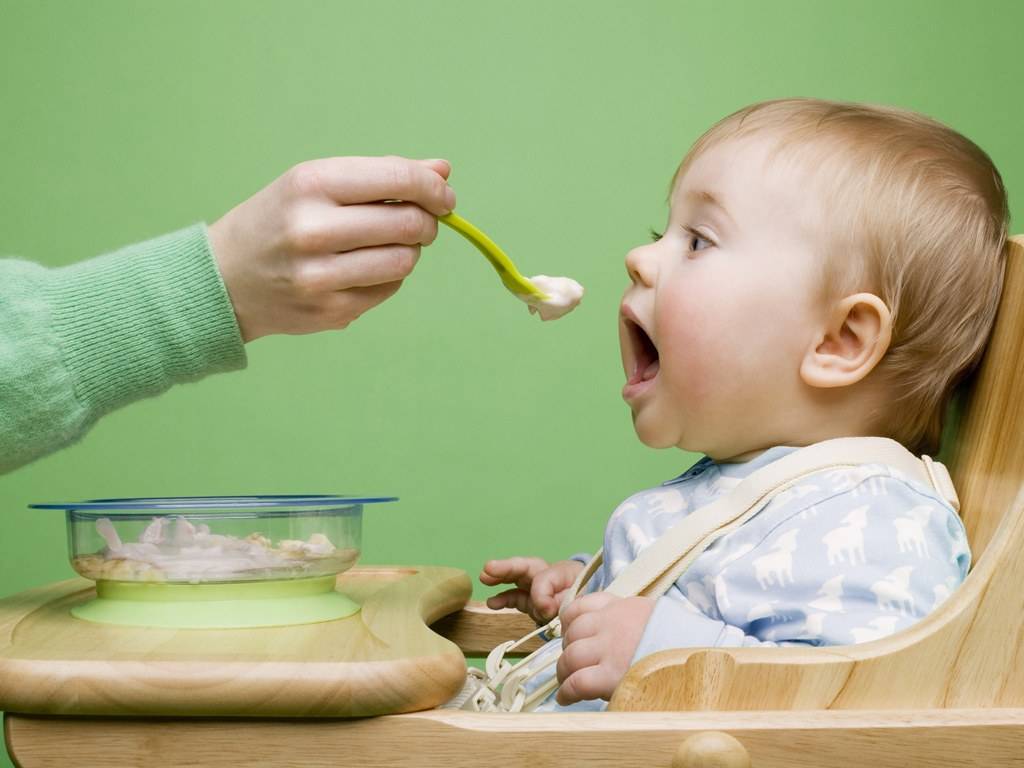
Benefits:
- Dissolves almost instantly in water;
- The composition is balanced, it is aimed at ensuring that absolutely all components of the mixture are fully absorbed by the baby's body;
- There are fatty acids that are aimed not only at improving immunity, but also at improving brain function and developing vision;
- Well adapted for children with any health condition;
- Improves the functioning of the gastrointestinal tract, including the normalization of the stool.
Faults:
- Parents often say that the mixture is too sweet;
- Foil bag does not have a snap closure;
- Contains no probiotics.
Nestogen
3. Nutrilak (InfaPrim) 1
Finally, we can present you the products that open the top four of the best infant formulas. This composition is made on the basis of whey protein of the highest quality. It also contains polyunsaturated fatty acids, which positively affect the state of the child's cardiovascular system, ensure the development of the brain and vision.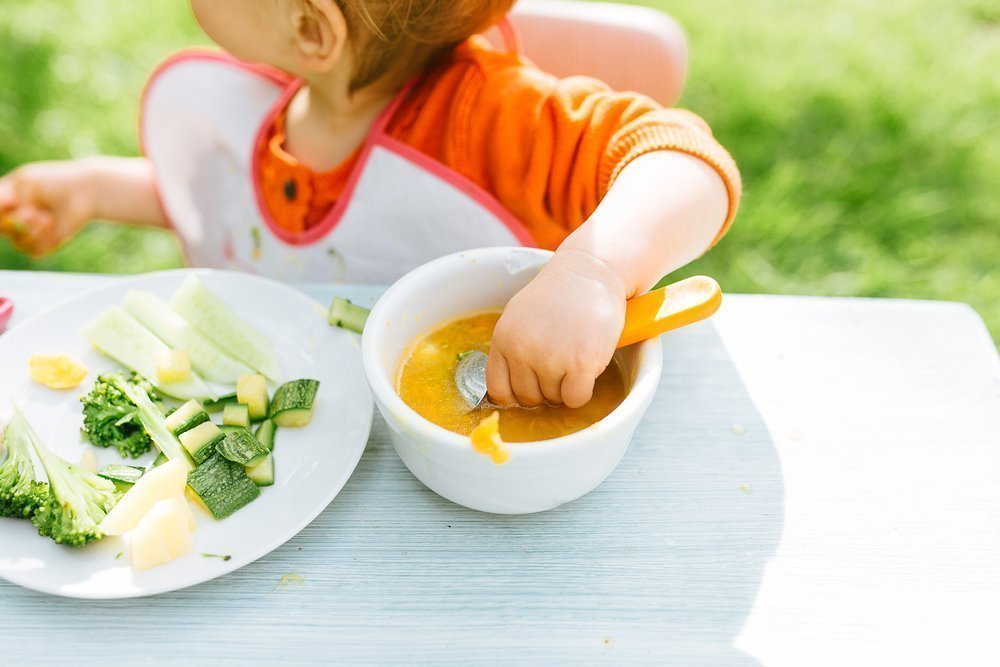 In addition, the mixture provides a well-balanced complex of vitamins necessary for the child, which was developed by the company's researchers, taking into account the age characteristics of the baby. It is well thought out, contributes to the harmonious growth and development of the body.
In addition, the mixture provides a well-balanced complex of vitamins necessary for the child, which was developed by the company's researchers, taking into account the age characteristics of the baby. It is well thought out, contributes to the harmonious growth and development of the body.
The mixture also includes vitamin D and calcium, which, together with other beneficial substances, are well absorbed by the child's intestines, and act on bones and teeth, strengthening them. The iron and zinc contained are designed to prevent anemia. The complex of antioxidants and biologically important nutrients are designed to protect the baby from most adverse environmental factors.
Advantages:
- Very reasonable cost of the mixture - it is one of the cheapest among all on the market today;
- There is no palm and rapeseed oil in the composition - many parents have a negative attitude towards these substances;
- Dissolves almost instantly;
- Every baby eats this mixture with pleasure.

Disadvantages:
- Not very convenient packaging, including a measuring spoon.
Nutrilak (InfaPrim) 1
2. BIBIKOL Nanny Classic
Depending on the label, it is used from birth until the child reaches the age of two. The composition is a dry, fully adapted milk formula, which is produced on the basis of goat milk, which is obtained in New Zealand farms. The natural conditions in this country make it possible to fully provide animals with fresh grass throughout the year. Product developers were able to fully preserve all the beneficial qualities of goat milk, largely due to the original production technology of its composition. It contains less alpha-S1-casein and beta-lactoglobulin when compared to standard baby food formulas made from cow's milk. In addition, the composition contains natural milk fat and oils of vegetable origin of the highest quality.
Goat's milk contains nucleotides, membrane components of fat globules (for example, phospholipids), oligosaccharides in sufficient quantity for a child's organism. The optimal amount of omega-3 and omega-6 fatty acids has been added to the mixture, there is a carefully balanced vitamin-mineral complex designed exclusively for the child.
The optimal amount of omega-3 and omega-6 fatty acids has been added to the mixture, there is a carefully balanced vitamin-mineral complex designed exclusively for the child.
Benefits:
- Goat's milk causes fewer allergic reactions than cow's;
- Great for lactose intolerant children;
- Pretty tasty product;
- Easily digested in children's intestines;
- Minimum risk of allergic reactions.
Disadvantages:
- Slightly higher in cost than products made on the basis of cow's milk.
BIBIKOL Nanny Classic
1. NAN Optipro
In the first place of the rating was the product of the Swiss brand, which is preferred by many parents largely due to its good qualities and pleasant taste. The main distinguishing point of this mixture compared to all other products that we considered as part of our review is the presence of beneficial bifidobacteria here. Otherwise, this is also an adapted dry milk mixture that can be fed to a child from the very moment of birth.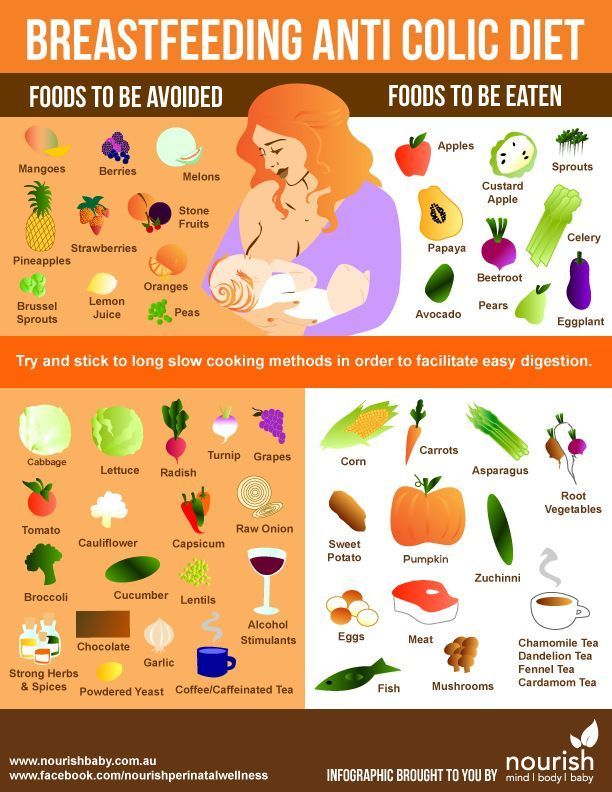 The composition is carefully balanced, so the manufacturer guarantees with confidence that the baby will receive all the necessary nutritional compounds, vitamins and minerals that are required for his physical, psychological and mental development in the first months and years of life.
The composition is carefully balanced, so the manufacturer guarantees with confidence that the baby will receive all the necessary nutritional compounds, vitamins and minerals that are required for his physical, psychological and mental development in the first months and years of life.
There is a unique Optipro complex here, which provides the baby with the required amount of protein, and bifidobacteria help to form and improve immunity. The mixture contains the right amount of trace elements, minerals and vitamins. Products are manufactured using the highest quality raw materials. It will not be possible to detect flavors, genetically modified foods, preservatives and dyes. The mixture is very pleasant in taste, it can be found in a variety of vegetable oils, as well as fish oil, magnesium chloride is used instead of standard table salt. It is diluted with water of any temperature - preferably room temperature, so that later it does not have to be heated.
Benefits:
- Excellent product quality;
- Widely available in any grocery store;
- Does not cause colic or loose stools;
- Convenient packaging;
- Easily dissolves in water.


